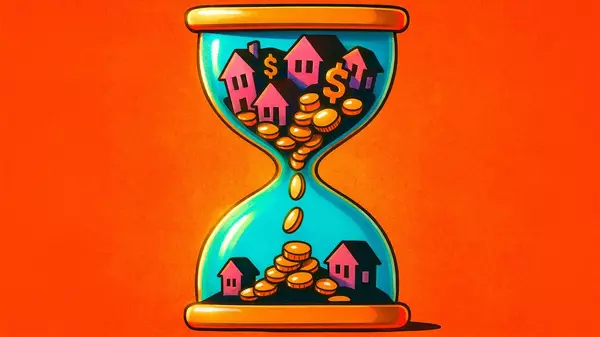74% of Americans Want To Age in Place, but Are Their Homes in Good Enough Shape?

Currently, baby boomers are sitting on a staggering amount of housing wealth. According to Realtor.com® research, they own an estimated $18 trillion to $19 trillion worth of real estate across the U.S.
As that demographic ages, hard decisions will need to be made in regards to potential long-term care needs. According to Northwestern Mutual’s 2025 Planning & Progress Study, 74% of Americans say they want to remain in their house and receive in-home care.
But can the current housing stock live up to challenge? And perhaps more importantly, will the houses boomers currently have up hold up to the stresses of aging in place?
People want to stay at home for as long as possible
According to Northwestern Mutual’s study, across all generations and genders, baby boomers held the highest percentage of those who preferred to age gracefully at home: 84%, to be exact. Gen X and millennials—the generations right behind and mostly poised to care for aging relatives—feel roughly the same, coming in with comparable percentages of 78% and 71%, respectively.
But the reality is that aging in place is expensive. In the report, Northwestern Mutual pointed to a 2024 Illumifin Cost of Care Study, which said that the annual cost of a home health aide providing only eight hours of care per day is $96,360. If those costs hypothetically increase by just 5% each year, by the time the next generation looks to retire in 2058, costs could sit at half a million dollars.
And that’s just considering the cost of care. And while programs like Medicaid can help with the costs, using those services could put your home at risk.
To be clear, if you own your home, the house is considered "exempt" during the initial Medicaid qualification process, provided it's your primary residence, in most cases. However, some states do impose equity limits.
But while your home doesn't prevent you from qualifying for Medicaid, it doesn't shield the property from future recovery efforts, like paying for care.
For example, let's say you're forced to enter a nursing home and begin receiving Medicaid benefits. Your home remains exempt. You can even return to the home if your health improves. However, once you die, the home's protected status ends, and it becomes subject to Medicaid's estate recovery program.
“Medicaid estate recovery is often what people are referring to when they say, ‘The nursing home took my mom’s house,’” explains Kathryn A. Penick, an associate at Knox McLaughlin Gornall & Sennet, PC. “The nursing home didn’t actually take the house. The state put a lien on the house because it was the probate asset of a person who received Medicaid services.”
Your house is also showing it’s age
Nearly half of all owner-occupied homes were built before 1980, and the median home age is now 41 years, according to the National Association of Home Builders. Old roofs, outdated plumbing and wiring, and stressed foundations all become problematic when you’re living on a fixed income.
According to a new report from MovingPlace, Rust Belt states currently lead their “Lemon Home” index, meaning they have the largest share of aging housing stock and homes affected by harsh weather cycles.
Rhode Island and Ohio top the Lemon Home Index, however, with respective scores of 86 and 81 out of 100. They're followed by Massachusetts (77), Connecticut (75), and Iowa (72).
Depending on the condition of your home, aging in place will likely take a good chunk of your savings to renovate and future-proof your place to make it liveable.
Renovating a 1,250- to 1,600-square-foot home costs an average of $52,228, according to Angi’s 2025 estimates, though you may pay as little as $3,000 if it only needs minor repairs—or as much as $190,000 for a complete renovation.
Aging in place typically means making sure the home is accessible with limited mobility. Consider that a bathroom remodel is usually one of the first areas focused on. According to Angi, a bathroom remodel could cost $6,500 to $28,000.
Additionally, the age of your home is a factor in how much you’ll pay as well. Older-home renovations start around $100,000, according to Angi. What may start as a small remodel could balloon due to necessary updates to outdated plumbing, electrical, and HVAC systems. Plus, older homes may reveal hidden problems during the renovation process, like water damage.
How to plan to age in place
For those who have paid off their mortgage and have retired, Social Security benefits can certainly help, but it’s far from enough to cover all additional housing expenses outside of paying a mortgage, including renovations and healthcare.
In fact, Social Security alone is enough to cover living expenses in only 10 states, according to the Realtor.com® analysis of median Social Security benefits by state and the Elder Economic Security Standard Index.
That’s why it’s critical, if you’re a homeowner who is nearing retirement age, to take stock of your finances and plan accordingly.
Using a retirement calculator, consider planning for a best-case scenario: living 25 to 30 years past your retirement age. You’ll need to calculate the financial gap of Social Security, your current savings, and how much you’ll need for everything else. If that all sounds too overwhelming, a financial planner should be able to help you figure out your needs.
Categories
Recent Posts









"My job is to find and attract mastery-based agents to the office, protect the culture, and make sure everyone is happy! "
